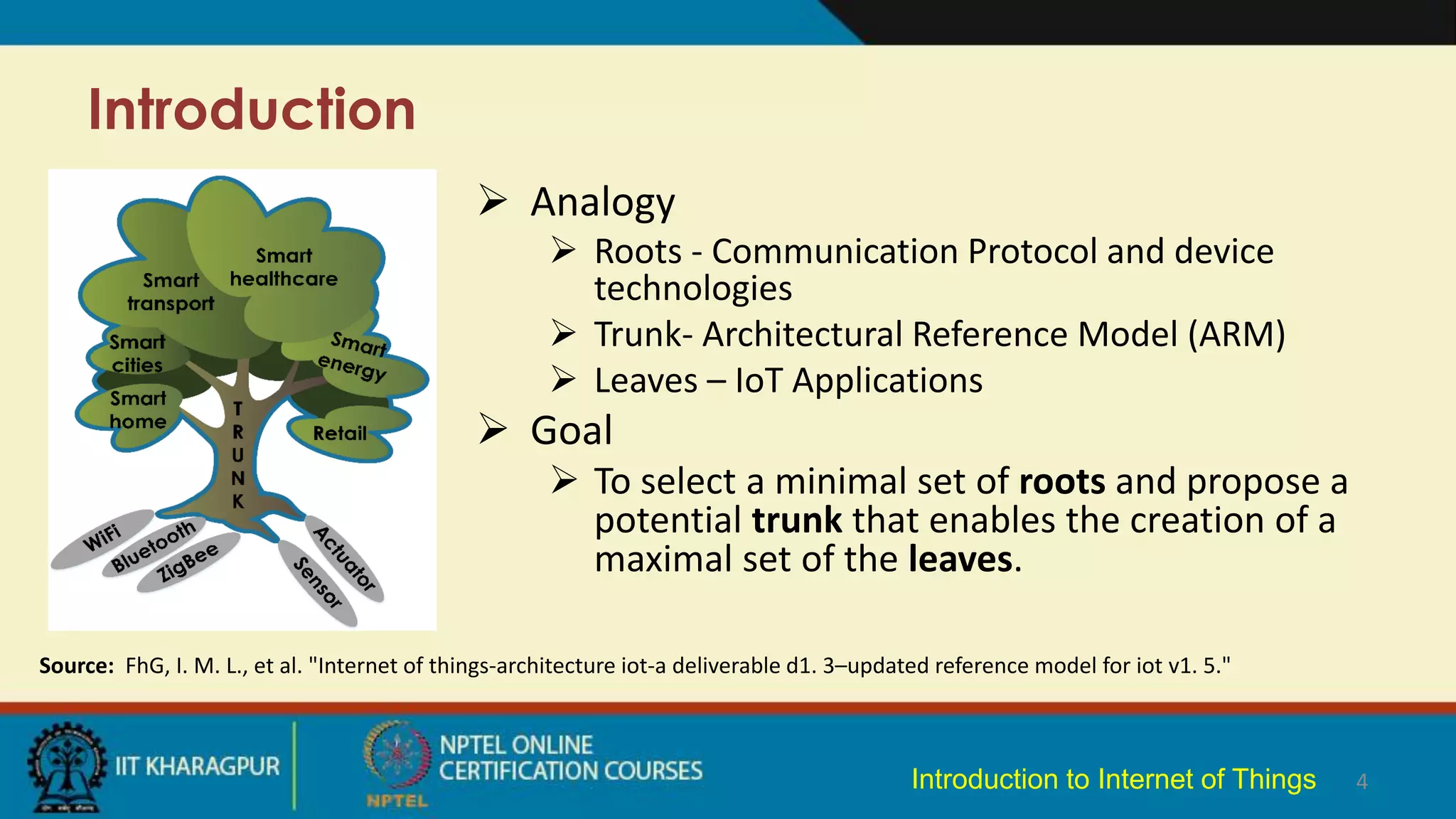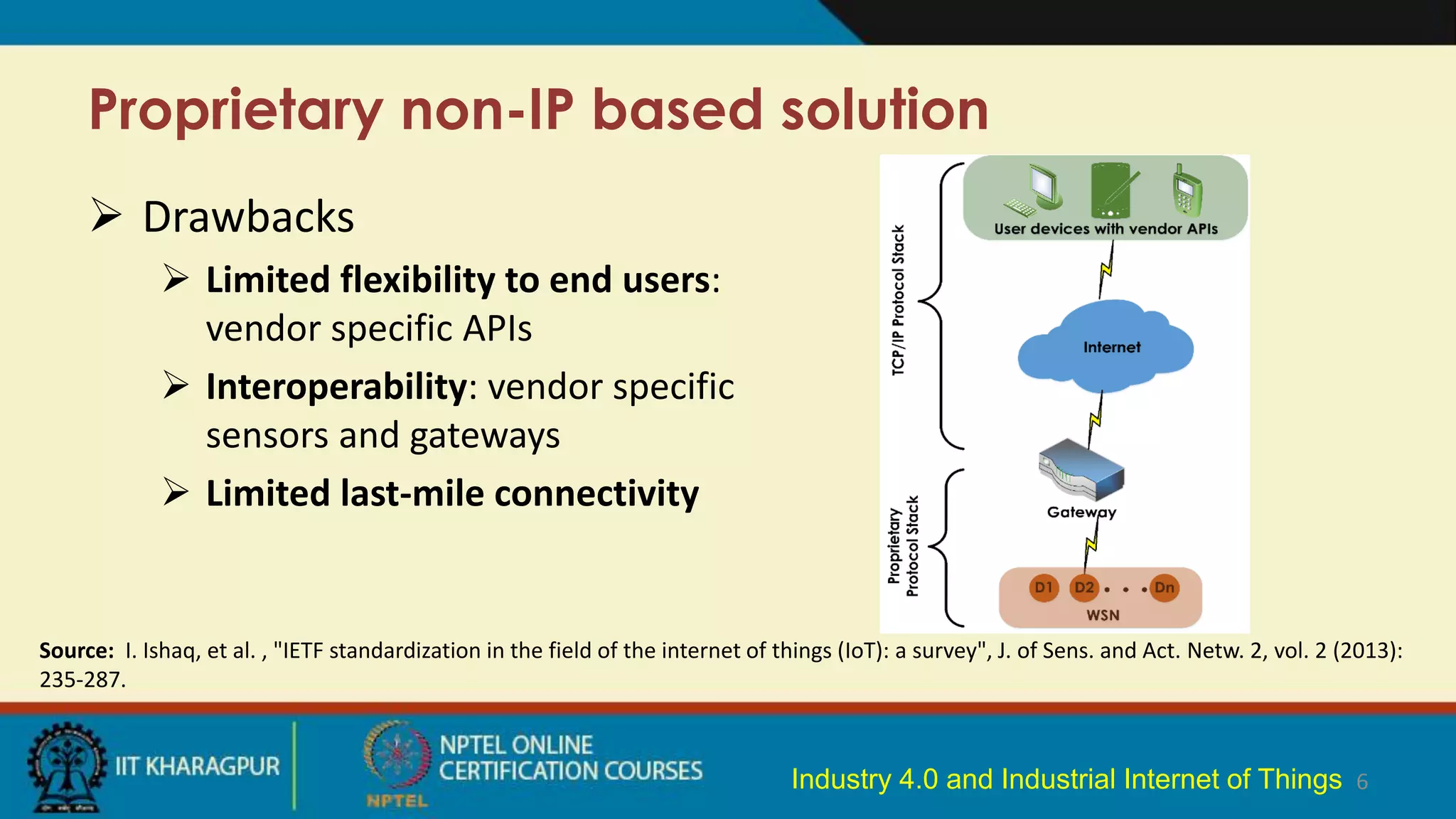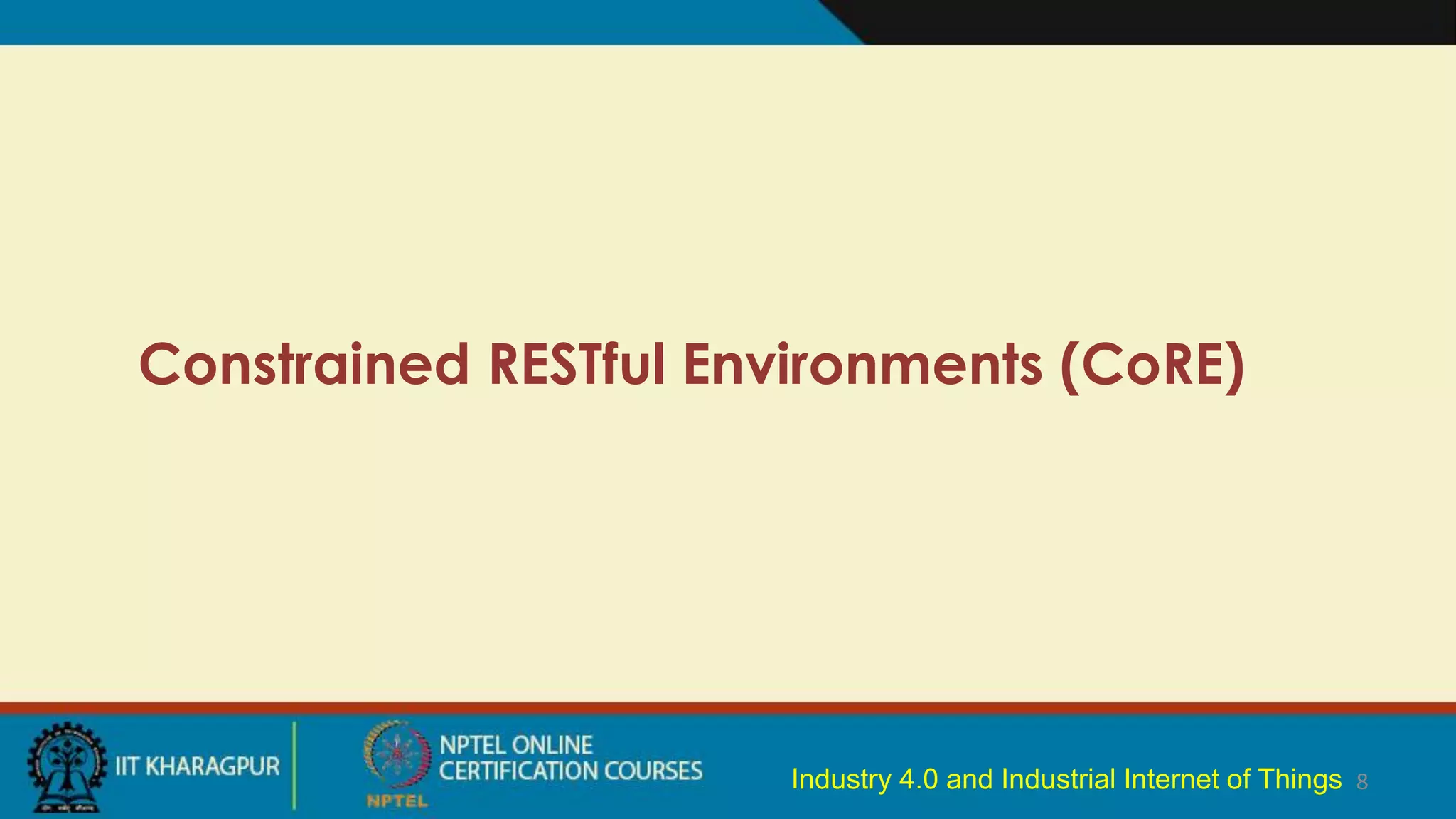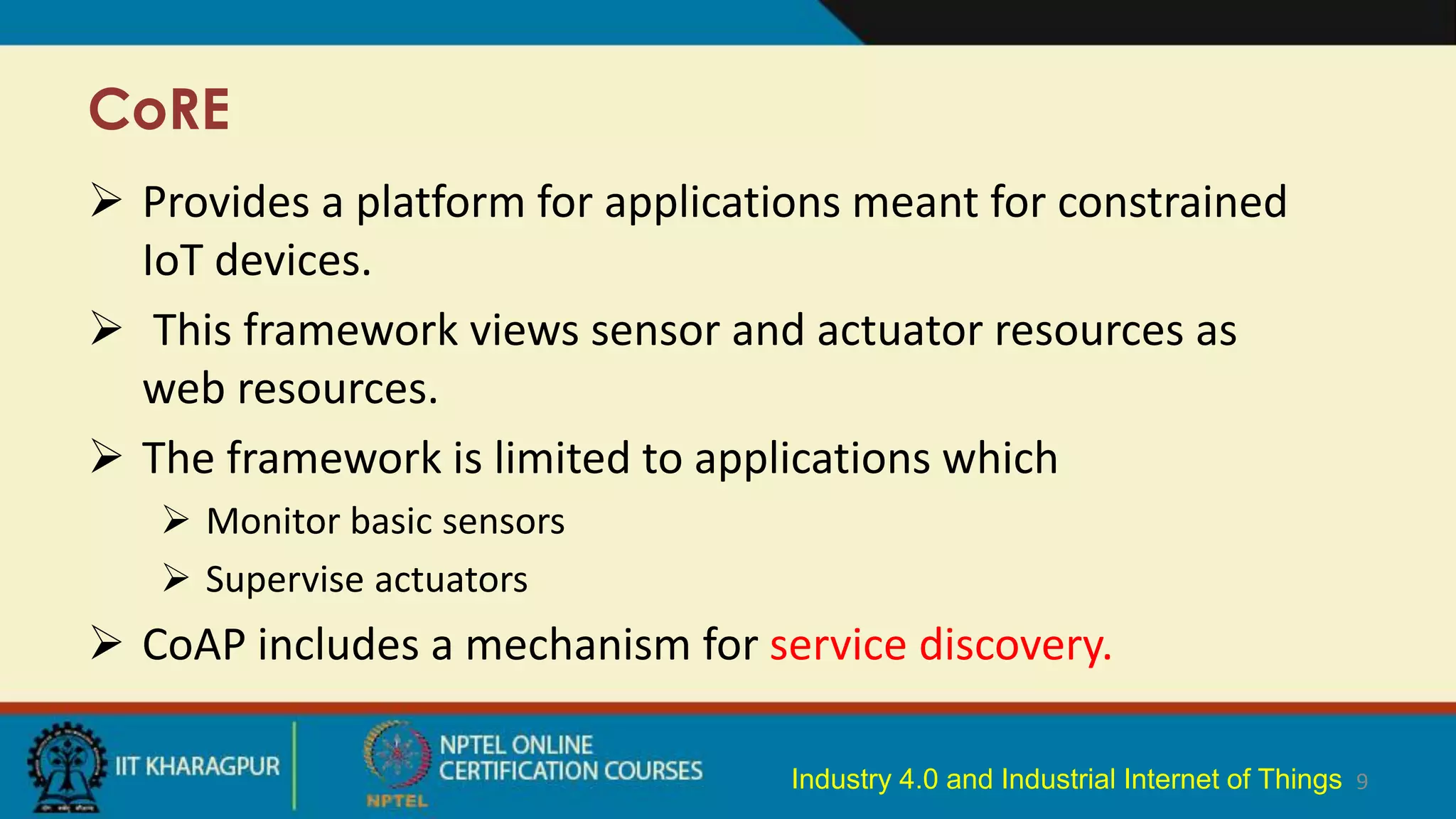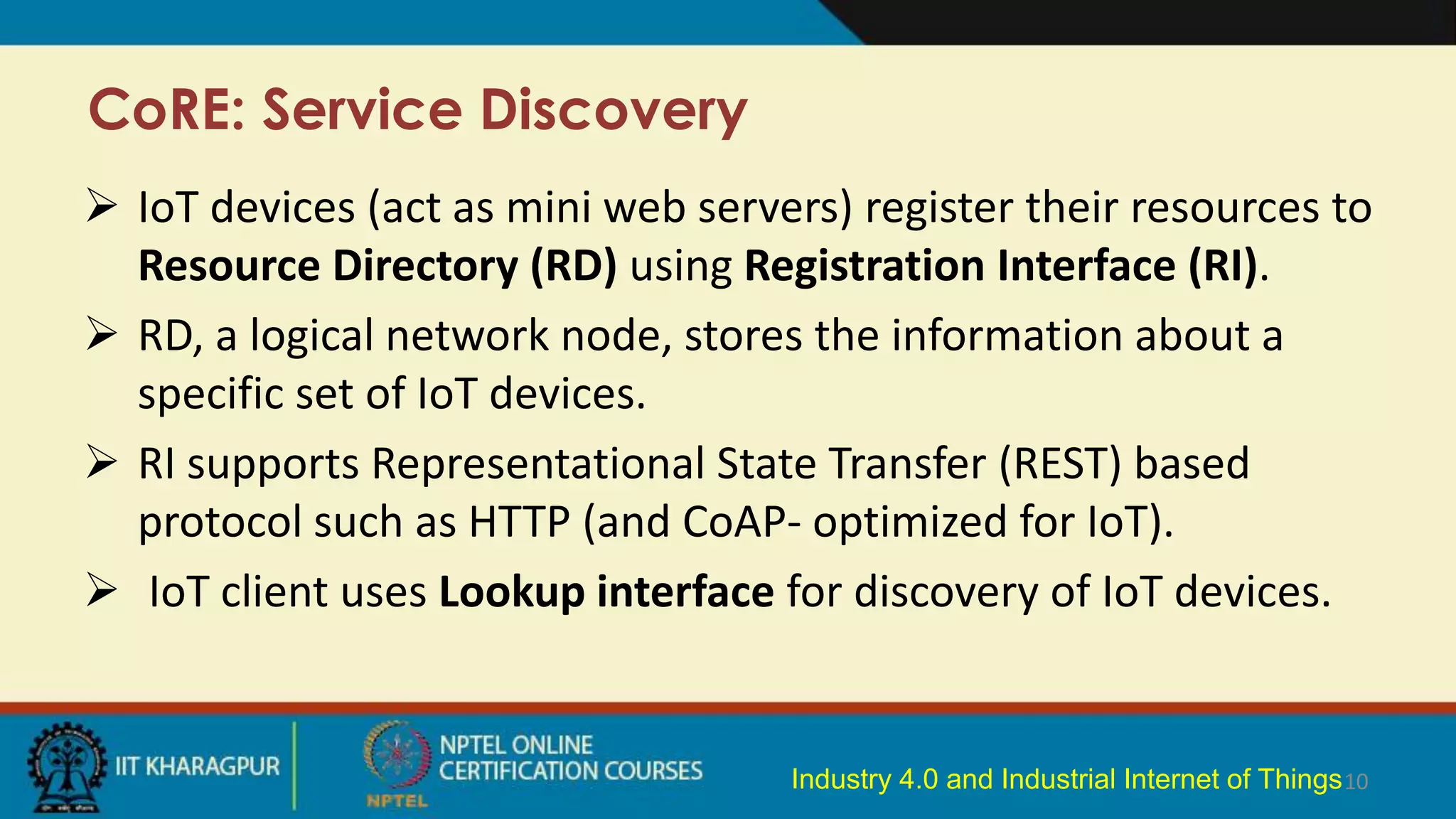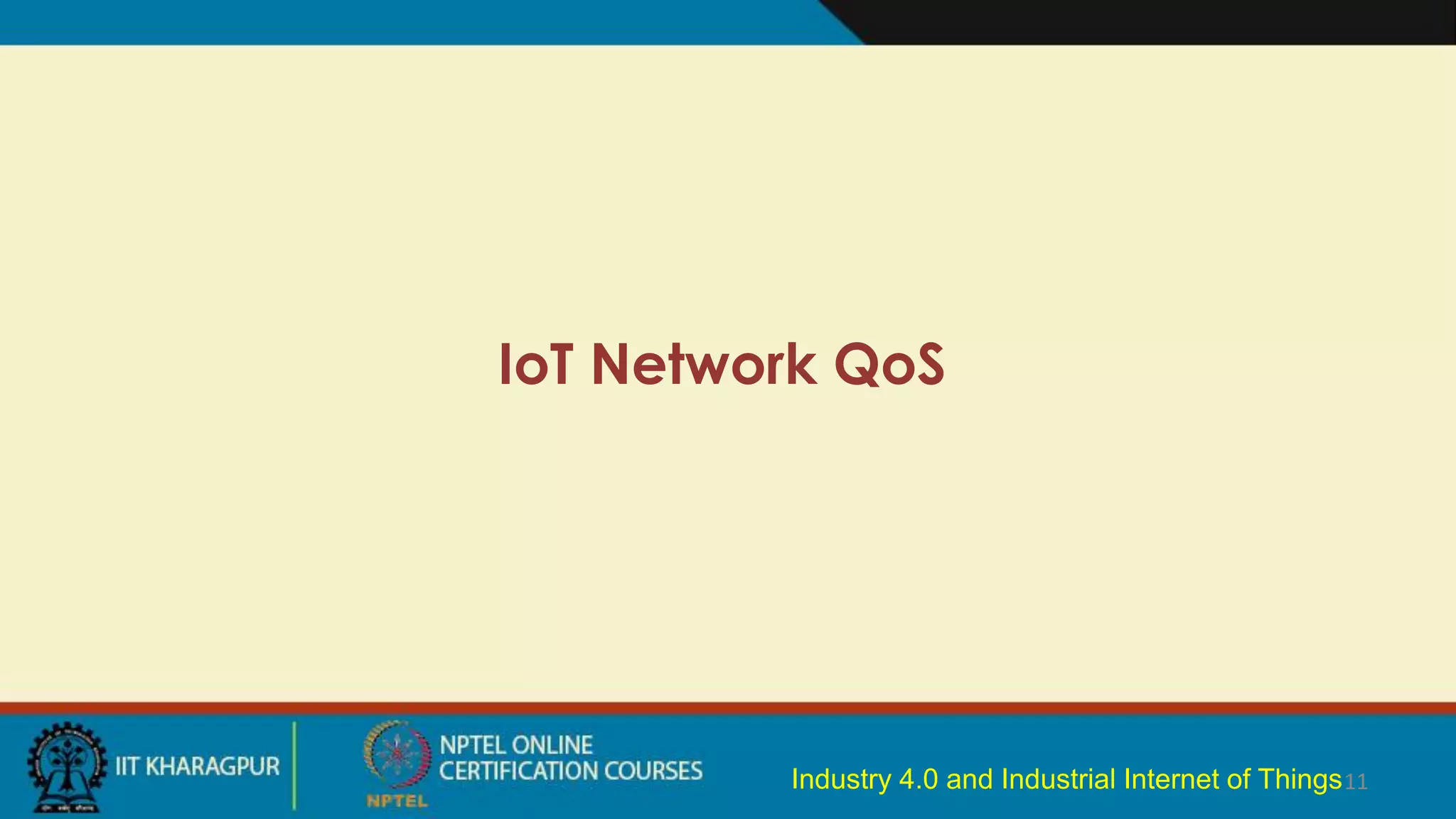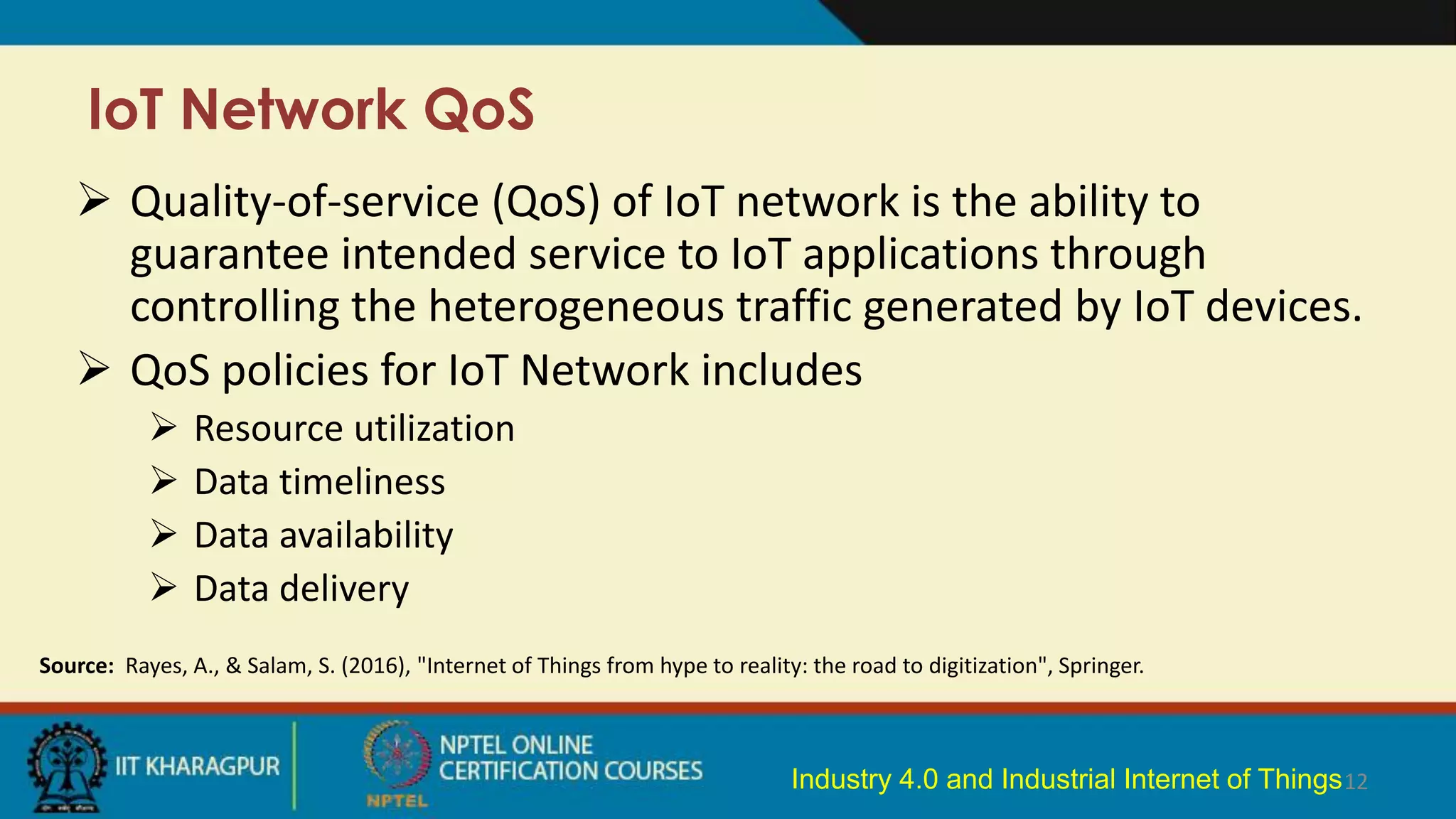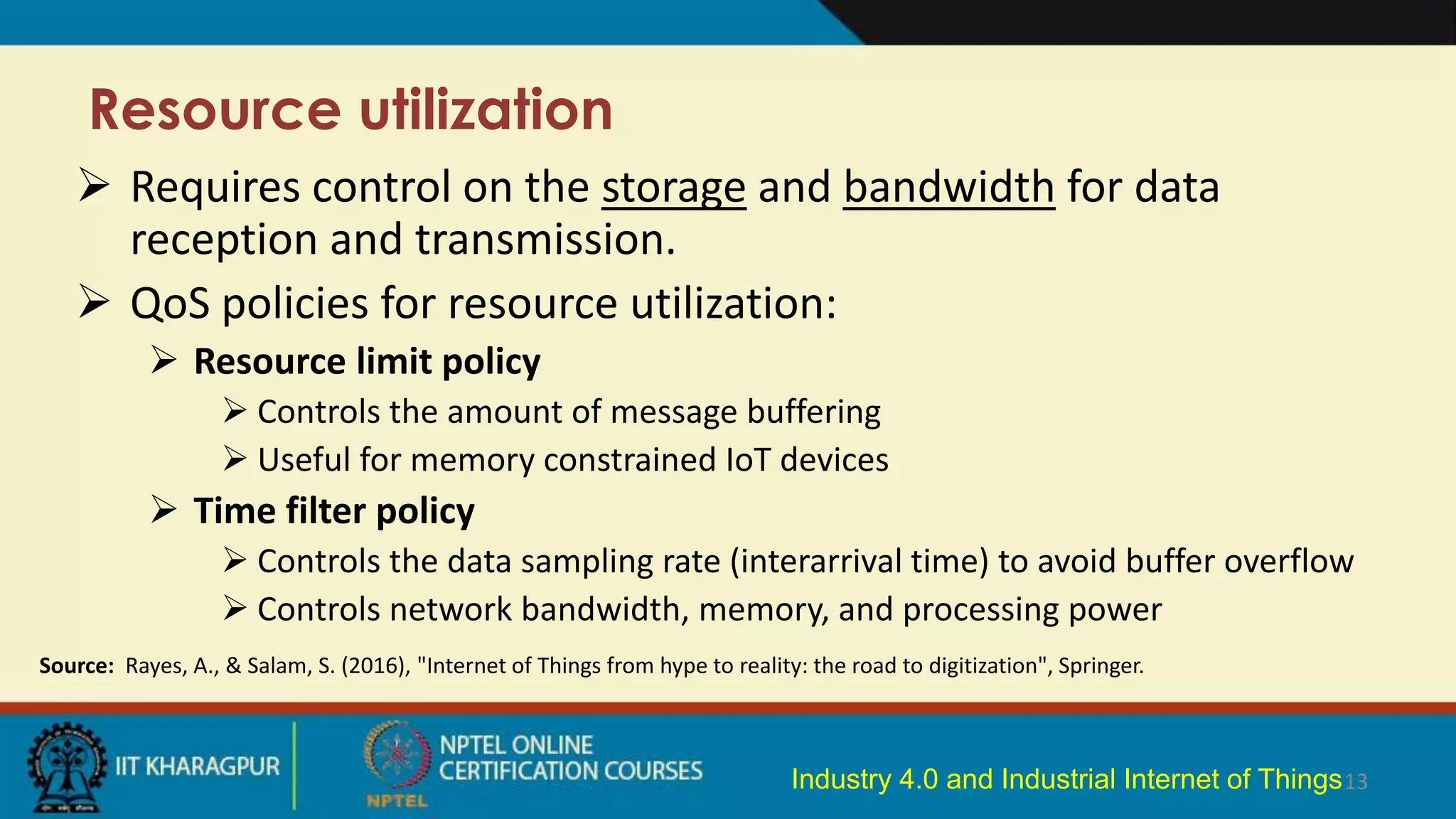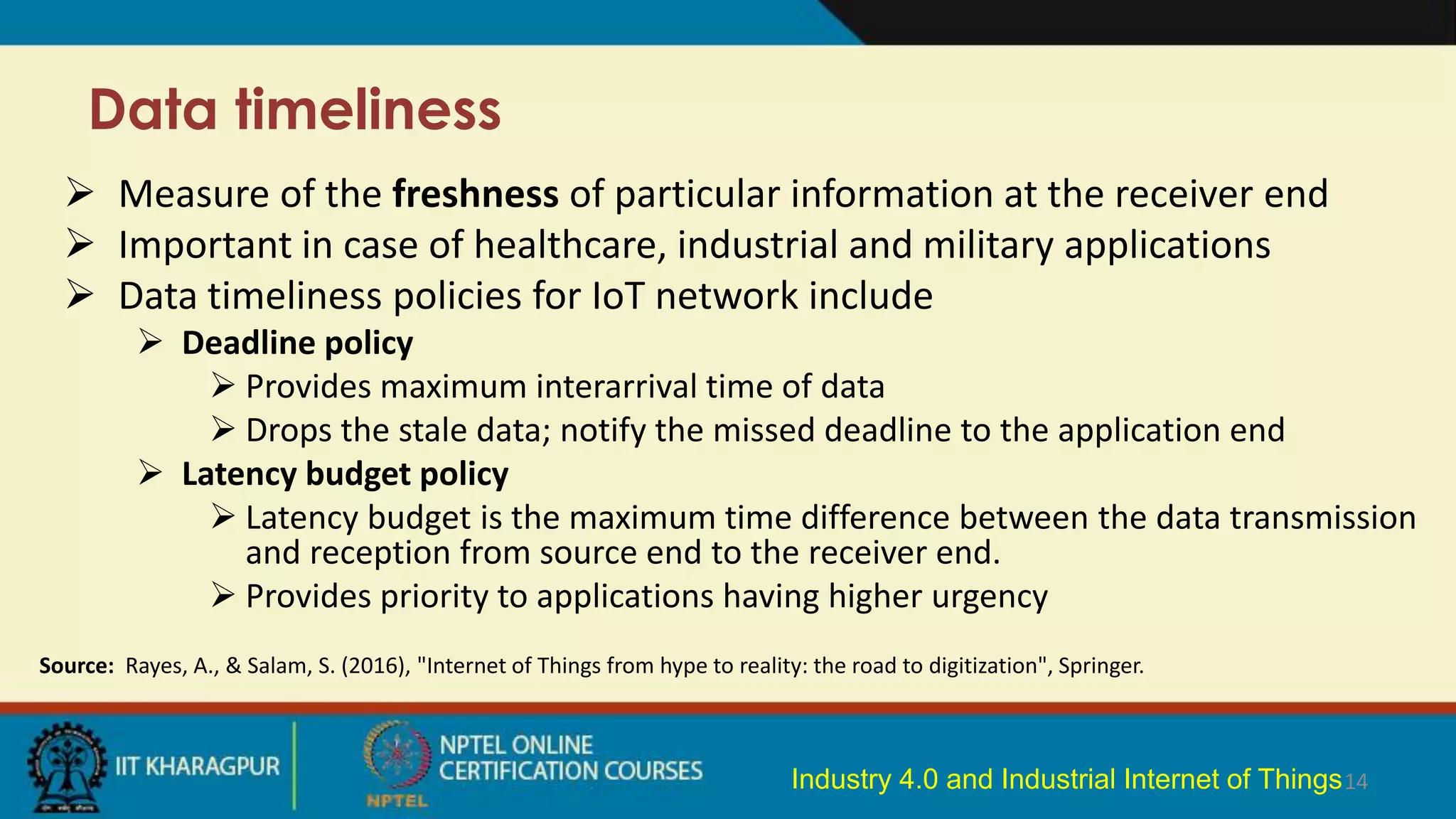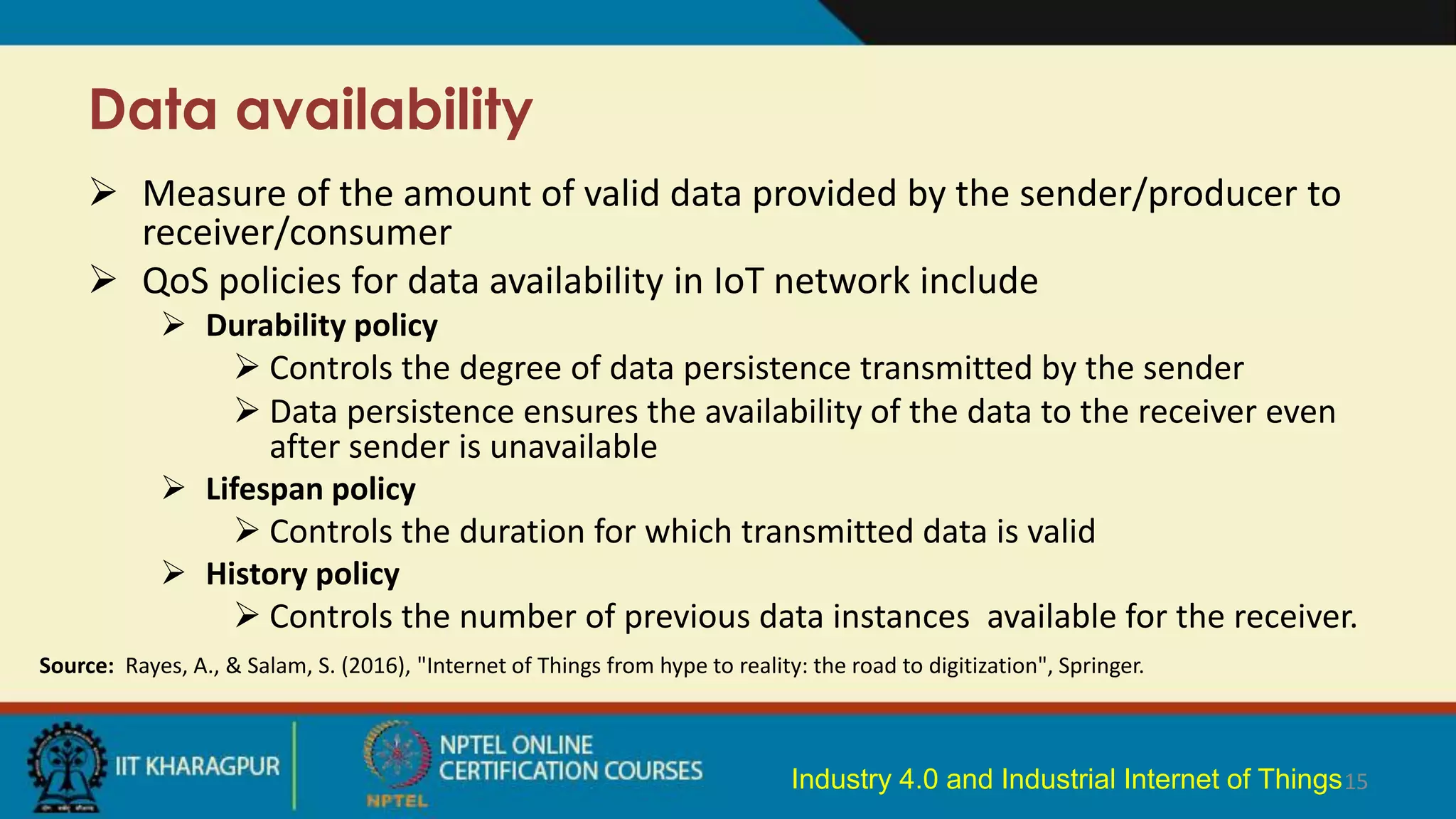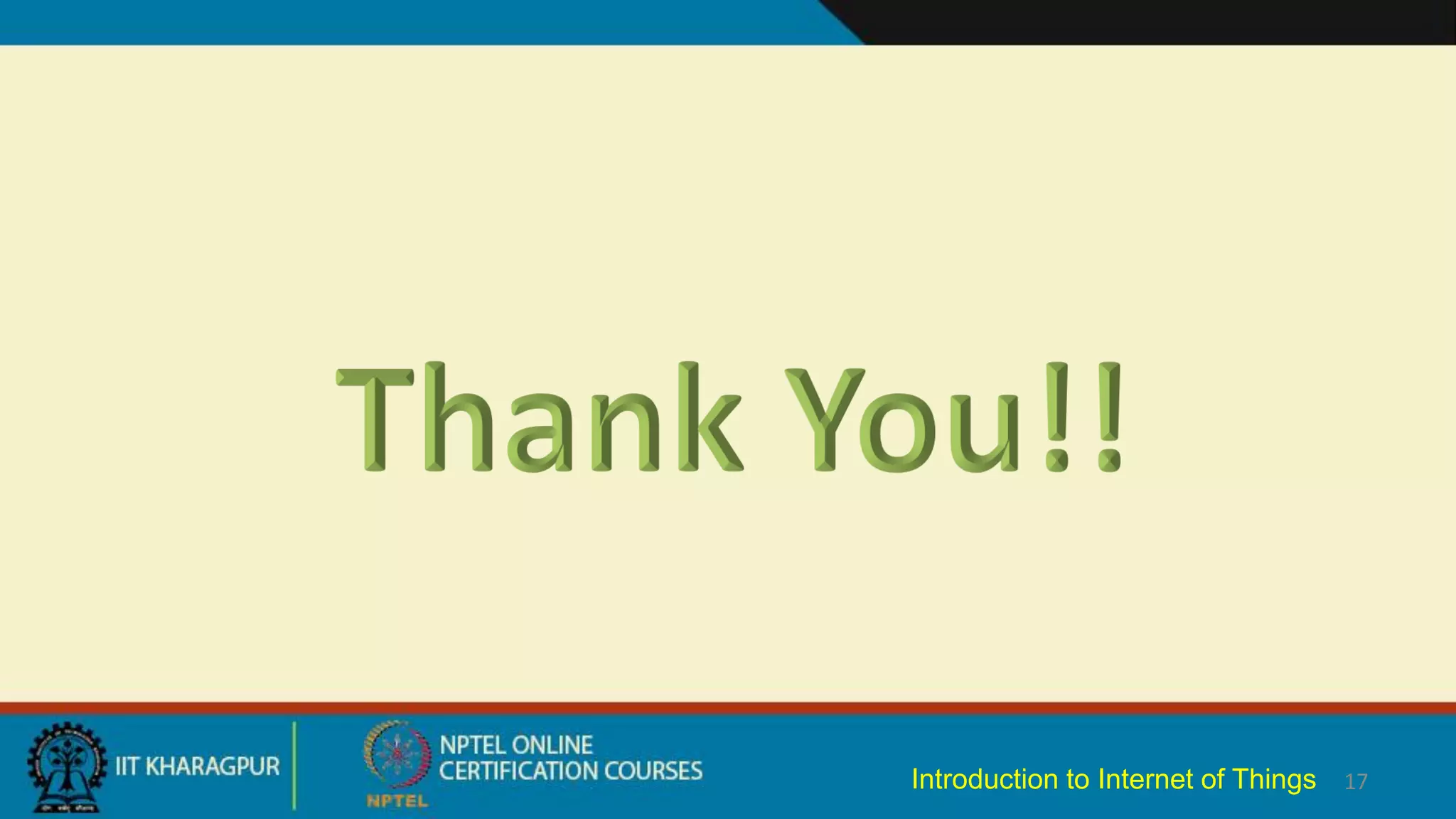This document discusses IoT networking and quality of service (QoS) for IoT networks. It begins by describing the characteristics of IoT devices such as low processing power, small size, and energy constraints. It then discusses enabling the classical Internet for IoT devices through standards developed by the IETF, including 6LoWPAN, ROLL, and CoRE. CoRE provides a framework for IoT applications and services discovery. The document concludes by examining policies for QoS in IoT networks to guarantee intended service, covering resource utilization, data timeliness, availability, and delivery.



